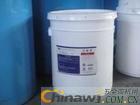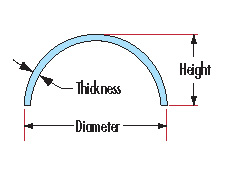Silicone sealant is a type of sealant that belongs to the same system as common glass glue. It is a substance made from materials such as sodium silicate and silicone, along with silicone structural polymers. Different types of silicone sealants have unique properties based on their chemical composition.
Acetic acid-based silicone sealants, such as methyl triacetoxysilane, ethyl triacetoxy silane, and vinyl triacetoxy silane, offer good adhesion to most materials, are transparent, and provide moderate mechanical strength. However, they can be corrosive to metals and cure quickly on the surface.
Deacetylated versions, like methyl tributyl oxime silane and organotin compounds, are odorless, neutral, and generally non-corrosive. They offer good oil resistance but tend to have lower mechanical strength and adhesion. Some of them may still be corrosive to copper.
Alcohol-free types, such as methyl trimethoxysilane, ethyl triethoxysilane, and vinyl trimethoxysilane, are odorless, non-corrosive, and provide good adhesion and high strength. However, they have a shorter shelf life (typically 4–6 months) and require storage at lower temperatures. Their reactivity is also relatively low, except for some specific variants like Nanda-42 and Nanda-73.
Deaminated silicone sealants, such as monomethyltricyclohexylaminosilane, offer good adhesion to concrete and limestone but are corrosive to metals and have limited strength, making them less commonly used in modern applications.
Deamidated versions, like CH3Si[N(CH3)-C(=O)-CH3]3 and (CH3)2Si[N(CH3)-C(=O)-CH3]2, have low modulus, high elongation, and long-lasting sealing performance. However, they tend to have low adhesion and sealing tensile strength, which limits their use in certain applications.
Deketalized types, such as CH3Si[OC(=CH2)-CH3]3, and methyltris(isopropenyloxy)silane Si[OC(=CH2)-CH3]4, are specialized formulations with unique characteristics depending on their chemical structure.
Tetrakis(isopropenyloxy)silane titanate, often combined with organic amine, is odorless, non-corrosive, and non-toxic. It offers excellent adhesion and stability during storage, though its synthesis process is complex and costly.
Silicone rubber is widely used in various construction and industrial applications:
1. Ideal for sealing joints in aluminum alloy, titanium alloy, and plastic steel doors and windows, as well as general decorative joints.
2. Suitable for weatherproof sealing in glass curtain walls, aluminum-plastic panel curtain walls, and stone dry hanging systems.
3. Perfect for sealing the sash of doors and windows.
4. Used for bonding porous stone, laminated glass, insulating glass, mirror glass, coated glass, and metal surfaces like zinc, copper, and iron.
5. Appropriate for sealing joints between different materials, including glass, metal, aluminum, ceramic tiles, plexiglass, and coated glass.
6. Effective for sealing joints in concrete, cement, masonry, rock, marble, steel, wood, anodized aluminum, and painted aluminum surfaces—often without the need for a primer.
7. Suitable for bonding ceramics, sanitary ware, marble, and other surfaces, including grease-free wood, silicone resin, sulfurized silicone rubber, ceramics, natural and synthetic fibers, and many plastics.
8. Can be used to bond ceramics, sanitary fixtures, and marble, among other materials.
For more detailed information about our products, please contact Hebei Xingda Insulating Glass Aluminum Strip Factory. Phone: 15731674467. Contact: Business Manager.

BK7 or K9L domes are used primarily in meteorology applications. BK7 offers excellent transmission from 300nm up to 2µm. BK7 is a relatively hard material, with excellent chemical durability.Â
UV fused silica domes ( JGS1 ): For applications operating in the deeper UV range, we offers a range of UV fused silica domes. Fused silica domes are commonly used in underwater applications at extremely high pressures.
Sapphire domes: For infrared applications we can provide sapphire domes. Sapphire is an extremely hard material with transmission of over 80% in the 2-5µm wavelength range. As with fused silica, sapphire is able to withstand extreme pressures, making it the perfect material for underwater camera and missile fairing applications.

Specifiation of our dome lens as follow:Â
Material:Optical glass N-BK7 , H-K9L, UV Fused Silica, Sapphire, and infrared crystal materials.
Diameter:20-350mm
Diameter Tolerance:+/-0.1mm
Thickness:>2mm
Thickness Tolerance±0.2~0.1mm
Center Deviation:3-5'
Surface quality:80/50 60/40
Coating: Antireflection Coating inside
Chamfers:0.2 x 45° typical
300Mm Diameter Dome Lens,300 Mm Diameter Hemisphere Dome Lens,Glass Dome Lens For Camera,Dome Lens For Subsea Shooting
China Star Optics Technology Co.,Ltd. , https://www.csoptlens.com
![<?echo $_SERVER['SERVER_NAME'];?>](/template/twentyseventeen/skin/images/header.jpg)